
The Sikh nation has a history of persecution and oppression ranging over a period of over 500 years. Attempts were made to eradicate the Sikhs by the rulers of the time up until the late 18th century. Therefore, the Sikhs were pre-occupied with survival, which lead to the development of martial arts and weaponry. Towards the later part of the 18th century, the Sikh kingdom became a reality resulting in tremendous developments in arts and crafts. It was also during this time that the Sikh Emperor, Maharajah Ranjit Singh encouraged the collection and safeguarding of historical and religious artefacts particularly in the treasury of the Golden Temple in Amritsar.
In 1849 the British occupied the Punjab and either auctioned off the Sikh heritage or sent it to England as gifts to museums or to individuals, including Queen Victoria. Amongst the people transporting these items, Lord Dalhousie removed sacred religious artefacts from the Punjab to England. The British museum classification of these items as being of Indian origin makes it often difficult to track them down.
The Sikhs regained their position by establishing a museum in Lahore (now Pakistan) and Amritsar. These museums collected whatever they could of the little that remained.
In 1947 at the time of the partition of Punjab and Indian independence Sikhs lost 62% of the original Punjab to Pakistan. Well over 450 Sikh historical shrines and buildings now remain in Pakistan. In the communal riots that followed much more of the historical heritage, artefacts etc., were destroyed or looted.
Since 1947 the Sikhs have continued to preserve whatever they could find. Tragically, when the Golden Temple was invaded by Indian troops in 1984, the Sikh museum, library and treasury were completely destroyed.
This has left the Sikhs wounded and the need to preserve the little that remains has never been greater. Much of that which remains is now in Britain, to the relief of many Sikhs.
However, the community wants to have periodic access to it -that is, whenever possible they want to see it on display. Hence the enthusiasm for Warm, Rich and Fearless and other Sikh exhibitions.
There have also been two key auctions related to Sikh artefacts - one that took place in Elvedon Hall (related to Maharajah Duleep Singh), the other in Scotland (relating to Lord Dalhousie' Sikh collection).
1993 was the centenary year of the death of Maharajah Duleep Singh and the activities organised around it-raised public interest and awareness.
"Until Lions have their own historians," said a philosopher, "the tales of hunting will glorify the hunter."
This is very true of the nations that lost their autonomy and were ruled by other powerful states. The Sikhs in Punjab happens to be one such nation. The imbalance in imparting education of true facts has always been the prerogative of the victorious nations and as consequence the vanquished have always suffered.
Much distortion exists in the literature relating to Sikh history and religion. Sometimes it is deliberate and other times the implications of what was being said was not appreciated for instance some writers have made foolish statements such as "Sikhism is the best bits of Islam and Hinduism". These types of statements attempt to devalue the Sikh religion and culture.
There is ample evidence of negative interference in the affairs of the Sikh Community by successive regimes from the time of the Moguls to present date.
It is worth remembering that Sikhs throughout the world have been making history, for example, the Ghadarite Sikhs in North America and the Indian National Army Sikhs in Singapore, Malaysia and Burma. Equally we have a history of settlement, building of Gurdwaras and setting up organisations.
First World War Shrine: Patcham, Brighton &
the Stone
Doorway near the Royal
Pavilion
India contributed 1,402,350 soldiers during the First World War. More than 64,000 lost their lives and more than 12,000 won awards for bravery including 12 Victoria Crosses.
One of the daughters of Maharajah Duleep Singh, Sophia, visited the wounded Indian soldiers who fought on the Western Front during the First World War, and merited a mention in the report from the Censors Office (IOR:MSSEURF 143/9 I, Letter No.16).
The Indian soldiers who were wounded were brought back over to England. Special hospitals were set up to treat the sick and wounded. In Brighton there were three hospitals: The Royal Pavilion, The Dome Hospital and The York Place Hospital. There was one at Barton, New Milton, and others at Bournemouth, Brokenhurst and Netley.
The Indian dead were buried according to religious rites. Muslims from various hospitals were taken to the Islamic Mosque in Woking (the first one to be built in Britain, in 1889), whilst a burning 'Ghat', high on the Downs, near Patcham, was set aside for the Sikh and Hindu dead. A special crematorium was also built in Netley.
The Chatri (Shrine) at Patcham reads:
"To the memory of all the Indian soldiers who gave their lives in the services of their King Emperor in the Great War, this monument erected on the site of the funeral pyre where the Sikhs and Hindus who died in hospital in Brighton passed through the fire is, in grateful admiration and brotherly affection dedicated"
The Sikh Maharajah of Patiala paid for the shrine to be built. There are similar shrines in France and Ethiopia to remind the world of the contributions made by the Sikhs and other soldiers of the British-Indian Army.
Outside the Brighton Pavilion there is a stone doorway erected by the Maharajah of Patiala to thank the people of Brighton for looking after the wounded Indian soldiers in the Royal Pavilion.
Both the Shrine at Patcham and the Pavilion are very accessible and easy to find once in Brighton.
A Channel 4 documentary called "War of the Springing Tiger", first shown in 1984, examines the role of the Indian National Army (INA) which was formed by Mohan Singh, with support from the Japanese during the Second World War. There is a museum in Singapore based on this part of Sikh Indian history.
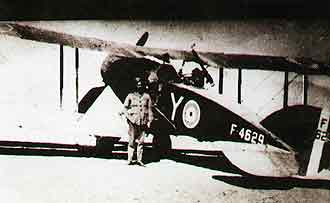

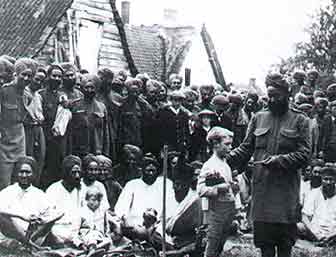
Osborne House was Queen Victoria's seaside home. It was here that in 1901 Queen Victoria died, surrounded by her children and grandchildren.
An important feature of the House is the Durbar Room, built in Sikh style. The Durbar Room was built by a Sikh, Bhai Ram Singh, an expert in Sikh decorative techniques whose portrait by Rudolph Swoboda appears at the entrance to the room.
Paintings of Maharajah Duleep Singh, his first wife Bamba, his children and a bust of him are displayed in the Grand Corridor at Osborne House.
The gift shop sells postcards of a painting of Duleep Singh and the royal children dressed as Sikhs.
Osborne House
East Cowes
Isle of Wight
A small collection of Sikh relics is kept at this museum. Items include a Khanda (double edged sword) with a pistol in the handle, saddles of the Sikh Rajah of Jind, Kalgi (crest), arrows, swords, weapons from Patiala, chakars (quoits), ivory items, etc.
Carved wood window frame and doors from Punjab are on permanent display in the hall of the International Community Centre, Mansfield Road: about 10 minutes walk from the Castle Museum.
The Victoria and Albert Museum
The Victoria and Albert Museum has one of the largest and most prestigious collections of Indian art in the world. There are estimated to be over 44,000 pieces. Although much of the collection remains out of the public eye, it has been carefully preserved and can be viewed by prior arrangement with the Indian Department.
Many items associated with the Sikhs such as jewellery, weapons, paintings, musical instruments, clothes, metal ornaments, etc., form part of the collection. In the Indian section exhibition. the Golden Throne of Maharajah Ranjeet Singh, some paintings and a Dastar Bunga of a Nihang are on display.
Access to the reserve collections can be gained by prior arrangements, and some items of the reserve collections have been touring as part of the "Warm, Rich & Fearless" exhibition.
The Victoria and Albert.Museum
South Kensington
London
SW7
2RL

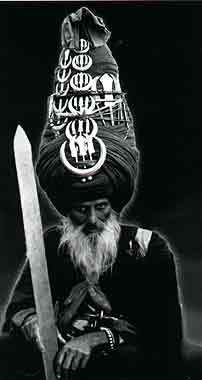
The East India Company was established in the year 1600 by a Royal Charter, with exclusive rights of trade with India. The India Office records form a vast and varied accumulation of archival material originating in, and reflecting the activities of;
The India Office (1784-1947)
The East India Company (1600-1858)
The
Board of Control (1784-1858)
Burma Office (1937-1948)
A number of British overseas agencies were linked with the above four bodies
in some way. There are about 170,000 volumes, boxes and files, 40,000 maps and
70,000 official publications.
Numerous works in the Indian languages of
Punjabi, Sanskrit, Arabic, Persian, Urdu, Sindhi, etc. from the libraries of
Ranjeet Singh, Tipu Sultan, King of Oudh, Mughals, etc. are also carefully
preserved here and at the British Museum.
Much research work needs to take
place in this area to identify all that which is connected to the Sikhs and
Punjab.
Reading passes are required. These can be easily obtained by
application.
India Office Library and Records
Orbit House
197 Blackfriars Road,
London SE1 8NG
The British Library
Department of Oriental Manuscripts and Printed
Books
Store Street
London
WCIE 7D6
British Library Newspaper Library
Colindale Avenue
London
NW9
SHE
The Tower of London
ln the Royal Armouries is a large collection of items of Sikh origin, such as a Dastar Bunga of a Nihang, swords, armour, katars, guns, etc. Some of these items are on display whilst others are kept in the reserve collection. The items in the reserve collection can be viewed by prior arrangement with the Keeper of Oriental Armour.
In the jewel house a number of historic crowns are on display including the Platinum Crown of Queen Elizabeth the Queen Mother, which holds the legendary Koh-i-noor diamond. This diamond came into British hands after the Anglo-Sikh wars.
Maharajah Ranjeet Singh used to wear the diamond on his bicep held in an armband. This gold armband is also on display.
The Royal Armouries are due to move their collections to Leeds at the Clarence Dock development site (opening April 16th, 1996). It is expected to be a major educational museum designed to be interactive. The Tower of London will continue to display items connected with it. The artillery section will also continue to be housed at Fort Nelson near Portsmouth, which has also got a Sikh cannon in its collection.
Keeper of Oriental Armour
H. M. Tower of London
EC3N 4AB
Belvoir Castle, Grantham
Belvoir Castle is situated between Leicester and Nottingham.
A Sikh cannon captured by the British during the Anglo-Sikh Wars the Sutlej gun).
There are no other Sikh relics in the castle.
Fort Nelson, Portsmouth
A Sikh cannon is on display here along with artillery which forms part of the Royal Armouries collection.
Manchester City Art Galleries
His daughter Gertrude, Countess of Albemarle, presented the City of Manchester Art Gallery with Earl Egerton's collection of oriental armour and weapons in 1910. This collection also includes some items collected by Colonel Hamilton.
No part of the collection is on display but is kept in storage and can be viewed by prior arrangement with the senior keeper of decorative arts.
There are many items of Sikh origin such as quoits, shields, armour, matchlocks, etc. An item of particular interest is the Gauntlets of Kharak Singh (son of Maharajah Ranjeet Singh). The armour of Maharajah Ranjeet Singh is believed to be in this collection but needs confirming.
Copies of the book "Indian Arms and Armour" by Egerton, and Sergeant Pearman's Memoirs of Sikh Wars, 1968 are recommended to interested readers.
Senior Keeper - Decorative Arts
Manchester City Art Gallery
Mosley Street
Manchester
M2 3JL
Cambridge
The University- Library has Lord Harding's private papers, the first Governor General of Punjab after the British take-over of Punjab.
Abingdon House, London
Abingdon House in London is where Rani Jindan lived for most of
her time in England.
Maharajah Duleep Singh also took her to Mulgrave Castle,
which he had on lease from Lord Normandy.
After about two years in Britain, Rani Jindan died on 1st August, 1863.
Rani Jindan's Prayer Book
Rani Jindan's prayer book is kept at the India Office Library. It is beautifully written in Punjabi in white letters and embellishments on a black background with ruled and coloured margins and gold and white rules between the lines, and with three full page illustrations. The India Office Library reference number is Mss Pan D4.
The National Army Museum
Until recently there was a sizeable display of items associated with the Sikhs including a large cannon. At present there is not much on display but the reserve collections are well worth a visit.
An item of considerable significance is the sword of Maharajah Ranjeet Singh that General Hudson had acquired and used to wear by his side.
The reading rooms of the museum contain many documents and prints related to the Sikhs. A pass for the reading rooms can be easily acquired from the museum, but must be obtained in advance.
The bookshop sells a variety of postcards, etc., related to the Sikhs in the army.
Finally, it is worth noting that the museum puts on periodic exhibitions of the British-Indian Army.
The National Army Museum
Royal Hospital Road
Chelsea
London
SW3 4HT
Indian Army Memorial Room, Sandhurst
The National Army Museum is also responsible for the Indian Army Memorial Room at Sandhurst. A portrait of the first Indian soldier to be awarded the Victoria Cross can be seen there.
The Vellum VC Roll lists every Indian Army recipient of the Supreme Gallantry award
Three stained glass windows are dedicated to the Sepoys of the Indian Army (one of them is to the Sikh soldiers).
Standards of British Indian regiments are stored here. Two corridors display some of these along with paintings.
The Memorial Room can be visited by arrangement on weekdays between lOam
and 4pm.
Write, giving seven days notice, to the Assistant Director Sandhurst Departments,
National
Army Museum, Royal Military Academy Sandhurst, Camberley, Surrey
Admission is free.
Imperial War Museum
All aspects of the two world wars and other conflicts involving Britain and the Commonwealth since 1914 come within the scope of the Imperial War Museum, and are illustrated in its' displays which include land, sea and air warfare as well as life on the home-front. Among the exhibits are uniforms, documents, paintings, posters, photographs, models and memorabilia
Considering that Sikhs, along with Indians, had contributed over 3 million volunteers between the two world wars and lost over 200,000 of them, and that they fought in every theatre of the war, very little acknowledgement is given to this fact in the displays (or D-Day celebrations!).
Work needs to take place in using the museums reference collections for creating a Sikh heroes, Sikh VC's, etc. exhibitions.
Imperial War Museum
Lambeth Road
London
SEl 6HZ
Museum of Staffordshire Regiment
Some relics of the Anglo-Sikh Wars are on display here. The museum is located about three miles from Lichfield Cathedral.
Queens own Royal West Kent Regiment Museum, Kent
There are some items of Sikh origin from the Anglo-Sikh wars displayed at the above museum, which is based in the Maidstone Museum, Kent.
Canterbury Cathedral, Kent
Sikh battle standards captured by the British at the end of the Anglo-Sikh wars are on display here.
Lichfield Cathedral, Staffordshire
A monument in the Cathedral pays tribute to the soldiers of the Staffordshire Regiment, who died during the Anglo-Sikh Wars.
Sikh standards captured during the Battle of Ferozepur on 21st December 1845 are also on display here.
Other Places of Interest
Much more work in collation of information and identification of Sikh artefacts still remains to be done. Further such research is needed at the following places.
1. Ashmolean Museum of Art and Archaeology, Beaumont Street, Oxford
This is the oldest museum in the country (1683). Exhibits include Indian sculpture
and paintings. There is also a medal collection and coin collection of most
countries and periods.
2. Kedleston Hall, Derbyshire, DE6 4JN. Home of Lord Curzon (former Viceroy of India). Contains a large, rich collection of items from India.
3. The British Museum, Great Russell Street, London, WC lB 3DG. The department of Oriental Antiquities of the museum houses a number of items from Punjab, particularly books, coins and paintings. Reserve collections can be seen by prior arrangements.
4. Liverpool Museum.
5. Bradford Museum and Art Gallery.
6. Queens own Royal West Kent Regiment Museum, St. Faith Street, Maidstone,
ME14 ILH.
7. Horniman Museum.
8 Sikh items, which belonged to a Punjabi Brahman from Lahore by the name of Kirpal Dass, are kept at the Institute of Oriental Studies, St. Petersburg, Russia.
9. Indian National Army Museum - Singapore.
10. Ghadaritesl Kamagatamaru Museum (Desh Bhagat Centre) - Vancouver, Canada.
11. Wolverhampton Museum, Cannock Street, has the famous gates to the Noor Mahal Serai (historical guesthouse), in Jalandhar, Punjab.
This list is not exhaustive and the reader is encouraged to add to it as necessary.
Maharajah Duleep Singh -The First British Sikh?
Maharajah Ranjeet Singh died in the Lahore, Punjab in 1839. After a period of unrest in Punjab, his youngest son, Duleep Singh, was confirmed as the Maharajah.
Between 1840 and 1849 the Sikhs and the British fought three wars, and on 28th March 1849, Punjab became part of the British Empire. The Koh-i-noor diamond was acquired for the Crown and can now be seen on display, along with some other items of Indian origin, at the Tower of London.
Under the guardianship of Sir John Login, the Maharajah was converted to the Christian faith and brought to England in 1854. The Maharajah was just fifteen years old. Queen Victoria became his Godmother, and he became a well-known figure on state occasions. He grew up to become the second best shots-man in Britain.
He lived on the Elvedon Hall Estate in Suffolk, (a few miles from Thetford), and carried out alterations in the Sikh style to the building. He also restored the Elvedon Church.
His mother, Rani Jindan, who was exiled to Nepal, later joined him in England arid died in 1863. Duleep Singh took his mother's ashes to India, but was not allowed to leave his ship or visit the Punjab.
On his return he married, in Alexandria, Bamba Muller (believed td be of Ethiopian German origin), who died in 1887. They had three sons, Victor, Frederick and Albert, and three daughters, Bamba, Sophia and Catherine.
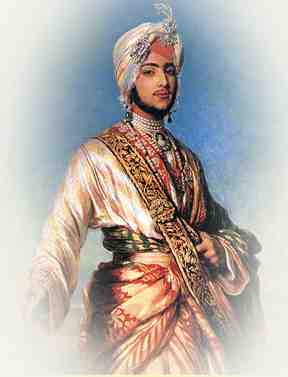
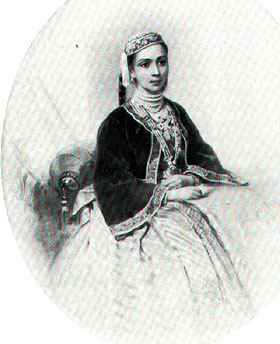
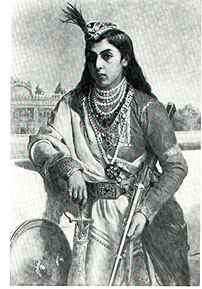
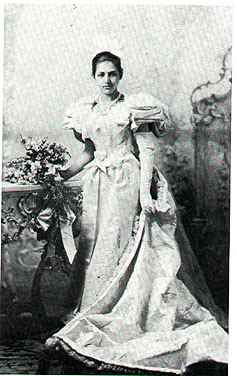
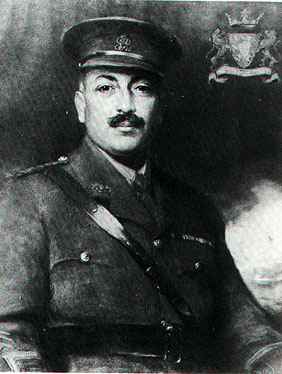
The Maharajah's relationship with the British government became strained over finance. He reconverted back to the Sikh faith in Aden, and tried to elicit support to free Punjab, but was not allowed to return there. Copies of the Maharajah's letters to the Times newspaper are easily accessible. Many attempts were made by the British government to discredit him and his mother (Rani Jindan ) in order to create distance between him and the people of the Punjab. The Maharajah died in Paris on 23rd October1893.
After the death of his first wife, the Maharajah married again. His second wife, Ada (who is believed to be of Russian origin), was the mother of two daughters, Pauline and Irene.
His daughter Sophia visited wounded Indian soldiers, who had been fighting on the Western Front during the First World War. She died in 1948. The Sikh soldiers of the Indian Convalescent Home, Barton-on-Sea, presented her with a silver cup in 1916. This cup is now part of the Bamba Collection in Lahore, Pakistan.
His estate was sold to the Earl of Iveagh (who died in 1992), and is not open to the public. In the church yard of the Elvedon Estate the graves of the Maharajah, Bamba Muller and their son, Prince Albert, can be seen. A plaque in the church records his death. Duleep Singh donated most of the Church's silver and the marble altar piece, and his children built a stained glass window in his memory.
His eldest son, Prince Victor (born 1866), educated at Eton and Cambridge, became a Captain in the Royal Dragoons. He married the daughter of the Earl of Coventry, and died in 1918.
His next son, Prince Frederick, was also educated at Eaton and Cambridge. He served in both the Suffolk and Norfolk Yeomanry, attaining the rank of Major. After gaining his MA in History, at Cambridge, he devoted himself to writing articles on subjects such as local heraldry, and forming a collection of paintings, prints and other items of local interest. After living at Breckles Hall, Old Buckenham Hall, he purchased Blo9 Norton Hall in 1906 and farmed the land associated with it.
In 1921, Prince Frederick purchased the Ancient House, White Hart Street, in the town of Thetford for use as a museum, himself contributing objects for display. Prince Frederick Duleep Singh MA, MVO, FSA died at Blo' Norton on August 15th, 1926, and is buried in the Blo' Norton church yard. A plaque in the church records his death, and his name appears on a roll of honour also in the church. The land that he farmed is next to the church and Blo' Norton Hall is a few minutes away from there. There is nothing of interest to be seen at Blo' Norton Hall.
In the Blo' Norton woods the ruins of a small building can be seen, which according to local legend was a temple built by Maharajah Duleep Singh.
In his bequest he donated much of his collection to the library and museum in Thetford. Some of the items are stored in a house across the road facing the Ancient House Museum..
Princess Bamba Duleep Singh married Dr Sutherland and died in Lahore in 1957. Her collection (The Bamba Collection) is now kept at the Lahore Museum in Pakistan, along with many other items of Sikh origin. Many local people still remember her and Prince Frederick.
Thus, so far as records show, there are no living direct descendants of Maharajah Duleep Singh. A campaign to have his remains sent back to the Punjab has so far been unsuccessful.
A trip to Norfolk comprising of a visit to Elvedon churchyard, Thetford Village Museum and Blo' Norton churchyard is recommended. Please note that Elvedon Hall, Blo' Norton Hall and the woods in Blo' Norton are private property.
Portraits of Maharajah Duleep Singh and his family can be seen at Osborn House on the Isle of Wight.
Caxton Hall: Udham Singh Shaheed (Ram Mohammed Singh Azaad)
Caxton Hall, in London, was often used by Indians to hold meetings.
Around 1908 a meeting was held at Caxton Hall by the radical student group of India House to mark Sin Guru Gobind Singh Ji Day. A leaflet entitled "Bande Mataram, Khalsa" was distributed to awaken the Sikhs, to help overturn British Rule.
Following the assassination of Sir William Curzon Wyllie, the political ADC, by Madan Lal Dhingra, a meeting was held at Caxton Hall condemning his actions. Aga Khan was in the chair and among others Bhownaggree was present.
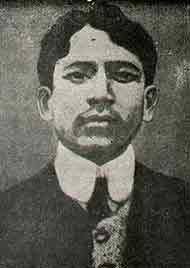
On Wednesday 13th March 1940, a meeting was held at Caxton Hall by the East
India
Association and the Royal Central Asian Society. Amongst the speakers were
Sir Michael 0'Dwyer, Lord Zetland (Secretary of State for India), Sir Louis
Dane (former Under secretary to the Governor of Punjab) and Lord Leamington
(former Governor of Bombay).
Sir Michael 0' Dwyer was Lieutenant-Governor of the Punjab at the time of the Jallian Wala Bagh massacre on I3th April, 1919, when Brigadier General Dyer ordered Gurkha soldiers to open fire on a crowd of 20,000 people. More than 1,500 unarmed men, women and children were wounded or killed.
Udham Singh, who had been present at the time of the massacre, took a vow of revenge. He came to Britain in 1933. He often used to go to the Shepherd's Bush Gurdwara in Sinclair Road, whose official at the time was Shiv Singh Johal. One of his favourite haunts was the Punjab restaurant owned by Gurbachan Singh in Neal Street, near Covent Garden.
Shepherd's Bush Gurdwara is considered to be the oldest Gurdwara in Britain, and the property was formerly the residence of the Sikh Maharajah of Patiala. The Gurdwara is now situated at 62 Queensdale Road in Shepherd's Bush.
Udham Singh had associations with the Ghader Party of Pacific Coast, America, and the martyr Bhagat Singh.
When the meeting was over at about 4.3Opm, Udham Singh pulled out a gun and fired six shots. Two of them hit Sir Michael 0' Dwyer (who died immediately), one hit the Marquis of Zetland, one hit the right hand of Lord Lamington, one hit Sir Louis Dane in the arm, and one went astray.
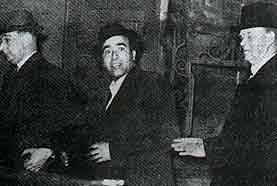
Udham Singh, of Mornington Terrace, North London, was hanged at Pentonville Prison on 13th July, 1940. Many Indians at the time, such as Krishna Menon and Shiv Singh Johal, tried to help him, whilst others like Mahatma Gandhi condemned the killing and refused to help, as he had earlier in the case of Bhagat Singh.
On 13th April, 1980, Udham Singh's remains were taken back to India and received at the airport by Mr Shankar Dayal Sharrna, President of the ruling Congress Party, Mrs Indira Gandhi and Giani Zail Singh, along with rnillions of Indians who paid homage to this son of India.
The gun used by Udham Singh, his diary, a knife and bullet fired at the time of the assassination are kept at the Black Museum, New Scotland Yard, 10 The Broadway, London SW 1. These are also illustrated in the book "The Murders of the Black Museum 1870-1970" by Gordon Honeycombe.

Newspapers of the period have shown photographs of Udham Singh being led away by detectives. There is also a photograph of him with some Sikhs and non-Sikhs outside the Shepherd's Bush Gurdwara taken in 1940. Copies of these photographs form part of the SCYS exhibition.
Many elderly Sikh people remember Udham Singh.
(More on Shaheed Udham Singh in section-'Martyrs'.)
All the above information is by courtesy of 'Sikh Community & Youth Service, Nottingham